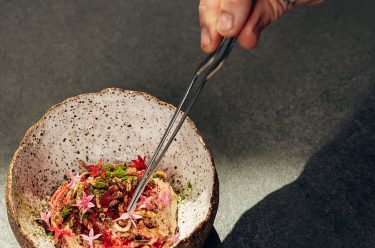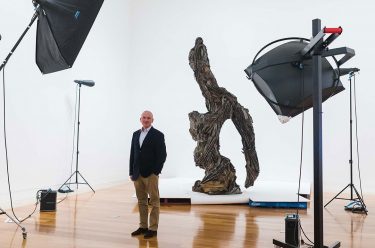Julie Fragar’s paintings in ‘GOMA Q’ are from an ongoing series inspired by the migration story of Antonio de Fraga – the first of Fragar’s paternal family to arrive in Australia. At the age of 12, Antonio was sent by his father, unaccompanied, on an American whaling ship on a six-year journey from his home in the Azores islands off the west coast of Portugal. The ship was wrecked off the Malay coast, where the crew starved for many days before being washed to shore. After living in Malaya for several years, Antonio departed again only to become shipwrecked off Fiji and captured by local cannibals. Though his fellow travellers were eaten, Antonio was released to missionaries, who then brought him to Sydney.
Fragar explains her approach to these works:
. . . these works are an imaginary and mixed-up interpretation of that factual story. The images are not concrete. They hypothesise how the story might have played out ontologically and psychologically. What was definitive (and difficult) lived experience for my ancestors becomes, in the studio, a self-reflexive source of drama, where people become characters and lives end up the oblique stuff of painting.
Julie’s work is on view in ‘GOMA Q: Contemporary Queensland Art’ currently at the Gallery of Modern Art (GOMA) until 11 October. The accompanying publication profiles the latest innovations and achievements by some of Queensland’s leading visual artists.


Loving the information on this internet site, you have done outstanding job on the content.